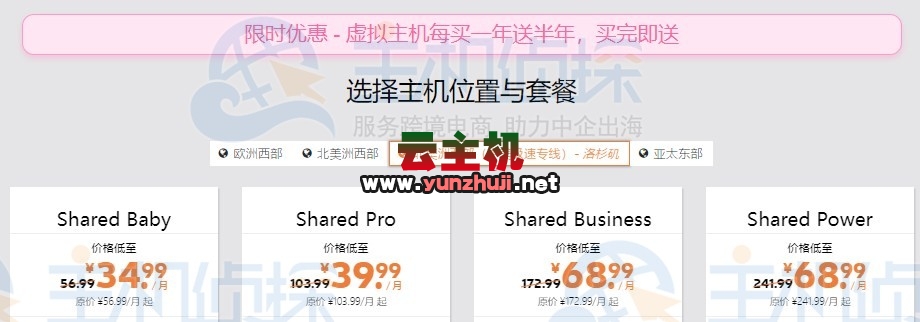在现代软件开发中,处理二进制数据是一个常见需求,无论是存储图像、音频文件还是其他类型的二进制数据,数据库系统都提供了多种方法来处理这些数据,本文将探讨如何在MySQL数据库中通过BLOB类型、Base64编码以及序列化技术来存储和检索byte数组。
一、BLOB类型存储
BLOB类型
BLOB是数据库中的一种数据类型,专门用于存储二进制数据,如图像、音频和视频文件,不同数据库对BLOB的支持和实现可能略有不同,但它们的核心思想都是相同的:提供一种高效存储和检索大块二进制数据的方法。
2. MySQL中的BLOB类型
在MySQL中,有四种类型的BLOB,分别是TINYBLOB、BLOB、MEDIUMBLOB和LONGBLOB,区别在于它们能存储数据的最大长度不同:
TINYBLOB:最大长度为255字节。
BLOB:最大长度为65,535字节(64KB)。
MEDIUMBLOB:最大长度为16,777,215字节(16MB)。
LONGBLOB:最大长度为4,294,967,295字节(4GB)。
3. 存储和检索示例
假设我们有一个byte数组,想要将其存储在MySQL数据库中,可以使用JDBC来实现,以下是具体的步骤:
import java.sql.*;
public class BlobExample {
public static void main(String[] args) {
String url = "jdbc:mysql://localhost:3306/your_database";
String user = "your_username";
String password = "your_password";
byte[] byteArray = {1, 2, 3, 4, 5}; // 示例byte数组
try (Connection connection = DriverManager.getConnection(url, user, password)) {
// 创建表
String createTableSQL = "CREATE TABLE IF NOT EXISTS blob_table (id INT AUTO_INCREMENT PRIMARY KEY, data BLOB)";
try (Statement stmt = connection.createStatement()) {
stmt.execute(createTableSQL);
}
// 插入数据
String insertSQL = "INSERT INTO blob_table (data) VALUES (?)";
try (PreparedStatement pstmt = connection.prepareStatement(insertSQL)) {
pstmt.setBytes(1, byteArray);
pstmt.executeUpdate();
}
// 检索数据
String selectSQL = "SELECT data FROM blob_table WHERE id = 1";
try (Statement stmt = connection.createStatement();
ResultSet rs = stmt.executeQuery(selectSQL)) {
if (rs.next()) {
byte[] retrievedBytes = rs.getBytes("data");
// 处理检索到的byte数组
}
}
} catch (SQLException e) {
e.printStackTrace();
}
}
} 二、Base64编码存储
Base64编码
Base64是一种将二进制数据转换为ASCII字符串的编码方式,它的优点是可以使用文本字段来存储二进制数据,适用于不支持BLOB类型的数据库或需要将数据通过文本格式传输的场景。
Java中的Base64编码和解码
Java 8引入了java.util.Base64类,可以方便地进行Base64编码和解码。
import java.util.Base64;
public class Base64Example {
public static void main(String[] args) {
byte[] byteArray = {1, 2, 3, 4, 5}; // 示例byte数组
// 编码
String encodedString = Base64.getEncoder().encodeToString(byteArray);
System.out.println("Encoded: " + encodedString);
// 解码
byte[] decodedBytes = Base64.getDecoder().decode(encodedString);
System.out.println("Decoded: " + java.util.Arrays.toString(decodedBytes));
}
} 存储和检索示例
以下是将Base64编码后的字符串存储到MySQL数据库中的示例:
import java.sql.*;
import java.util.Base64;
public class Base64StorageExample {
public static void main(String[] args) {
String url = "jdbc:mysql://localhost:3306/your_database";
String user = "your_username";
String password = "your_password";
byte[] byteArray = {1, 2, 3, 4, 5}; // 示例byte数组
String encodedString = Base64.getEncoder().encodeToString(byteArray); // Base64编码
try (Connection connection = DriverManager.getConnection(url, user, password)) {
// 创建表
String createTableSQL = "CREATE TABLE IF NOT EXISTS base64_table (id INT AUTO_INCREMENT PRIMARY KEY, data TEXT)";
try (Statement stmt = connection.createStatement()) {
stmt.execute(createTableSQL);
}
// 插入数据
String insertSQL = "INSERT INTO base64_table (data) VALUES (?)";
try (PreparedStatement pstmt = connection.prepareStatement(insertSQL)) {
pstmt.setString(1, encodedString);
pstmt.executeUpdate();
}
// 检索数据
String selectSQL = "SELECT data FROM base64_table WHERE id = 1";
try (Statement stmt = connection.createStatement();
ResultSet rs = stmt.executeQuery(selectSQL)) {
if (rs.next()) {
String retrievedString = rs.getString("data");
byte[] retrievedBytes = Base64.getDecoder().decode(retrievedString); // Base64解码
// 处理检索到的byte数组
}
}
} catch (SQLException e) {
e.printStackTrace();
}
}
} 三、序列化技术存储
序列化技术
序列化是将对象的状态转换为可以存储或传输的形式的过程,反序列化则是将这些形式恢复为原始对象的过程,通过序列化技术,可以将对象序列化为字节流并存储在数据库中,反序列化时恢复为原始对象。
Java中的序列化和反序列化
Java提供了Serializable接口来实现对象的序列化和反序列化,以下是一个示例:
import java.io.*;
public class SerializationExample implements Serializable {
private static final long serialVersionUID = 1L;
private int id;
private String name;
public SerializationExample(int id, String name) {
this.id = id;
this.name = name;
}
public static byte[] serialize(Object obj) throws IOException {
try (ByteArrayOutputStream bos = new ByteArrayOutputStream();
ObjectOutputStream out = new ObjectOutputStream(bos)) {
out.writeObject(obj);
return bos.toByteArray();
}
}
public static Object deserialize(byte[] bytes) throws IOException, ClassNotFoundException {
try (ByteArrayInputStream bis = new ByteArrayInputStream(bytes);
ObjectInputStream in = new ObjectInputStream(bis)) {
return in.readObject();
}
}
} 存储和检索示例
以下是将序列化后的字节数组存储到MySQL数据库中的示例:
import java.sql.*;
import java.io.*;
public class SerializationStorageExample {
public static void main(String[] args) {
String url = "jdbc:mysql://localhost:3306/your_database";
String user = "your_username";
String password = "your_password";
SerializationExample obj = new SerializationExample(1, "Test"); // 示例对象
try {
// 序列化对象为字节数组
byte[] serializedBytes = SerializationExample.serialize(obj);
try (Connection connection = DriverManager.getConnection(url, user, password)) {
// 创建表
String createTableSQL = "CREATE TABLE IF NOT EXISTS serialization_table (id INT AUTO_INCREMENT PRIMARY KEY, data BLOB)";
try (Statement stmt = connection.createStatement()) {
stmt.execute(createTableSQL);
}
// 插入数据
String insertSQL = "INSERT INTO serialization_table (data) VALUES (?)";
try (PreparedStatement pstmt = connection.prepareStatement(insertSQL)) {
pstmt.setBytes(1, serializedBytes);
pstmt.executeUpdate();
}
// 检索数据
String selectSQL = "SELECT data FROM serialization_table WHERE id = 1";
try (Statement stmt = connection.createStatement();
ResultSet rs = stmt.executeQuery(selectSQL)) {
if (rs.next()) {
byte[] retrievedBytes = rs.getBytes("data");
Object deserializedObj = SerializationExample.deserialize(retrievedBytes); // 反序列化对象
// 处理检索到的对象
}
}
} catch (SQLException e) {
e.printStackTrace();
}
} catch (IOException | ClassNotFoundException e) {
e.printStackTrace();
}
}
} 四、归纳与展望:byte数组在数据库中的应用前景与挑战
byte数组在数据库中的应用具有显著的优势,包括高效的存储和检索二进制数据、灵活的数据操作以及广泛的兼容性,其局限性也不容忽视,如存储空间较大、查询效率较低以及数据安全性问题,在选择是否使用byte数组存储数据时,需要综合考虑具体应用场景和需求。
展望:未来发展趋势与挑战应对策略
随着大数据和云计算技术的不断发展,byte数组在数据库中的应用前景广阔,我们可以期待更高效的存储机制、更强大的数据处理能力和更完善的安全保障措施来应对不断增长的数据需求和挑战,也需要关注新兴技术如区块链、人工智能等对数据库领域的影响和变革。
到此,以上就是小编对于“byte数组通配符数据库”的问题就介绍到这了,希望介绍的几点解答对大家有用,有任何问题和不懂的,欢迎各位朋友在评论区讨论,给我留言。

 云主机测评网
云主机测评网


















最新评论
本站CDN与莫名CDN同款、亚太CDN、速度还不错,值得推荐。
感谢推荐我们公司产品、有什么活动会第一时间公布!
我在用这类站群服务器、还可以. 用很多年了。